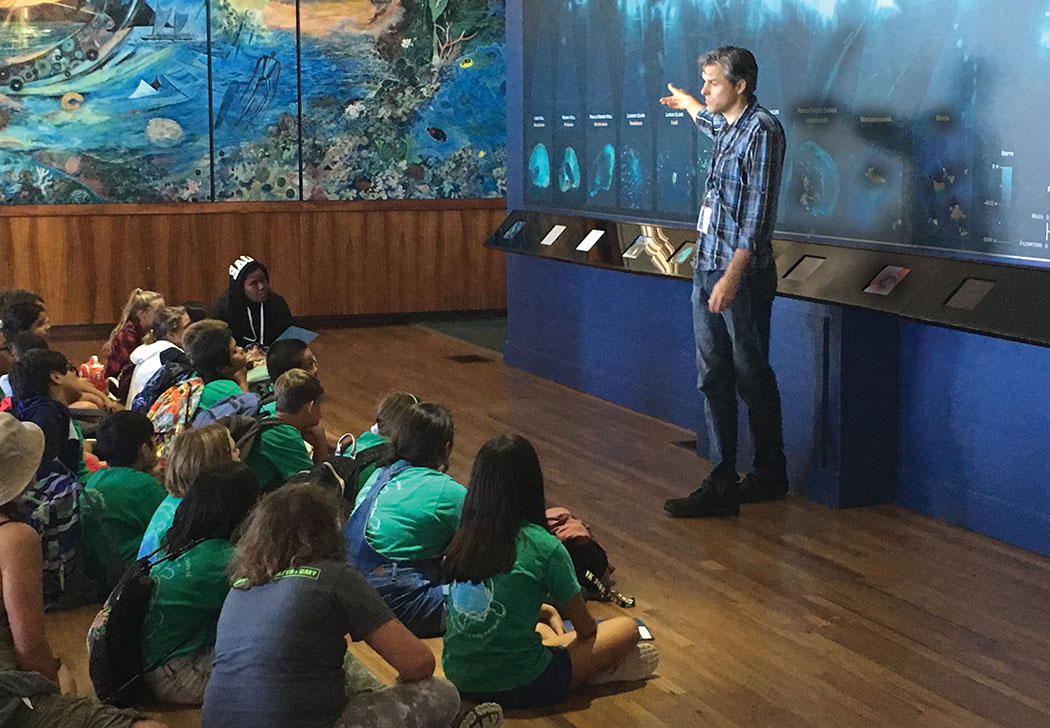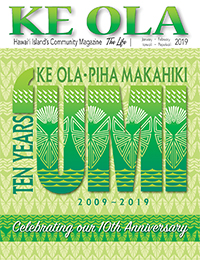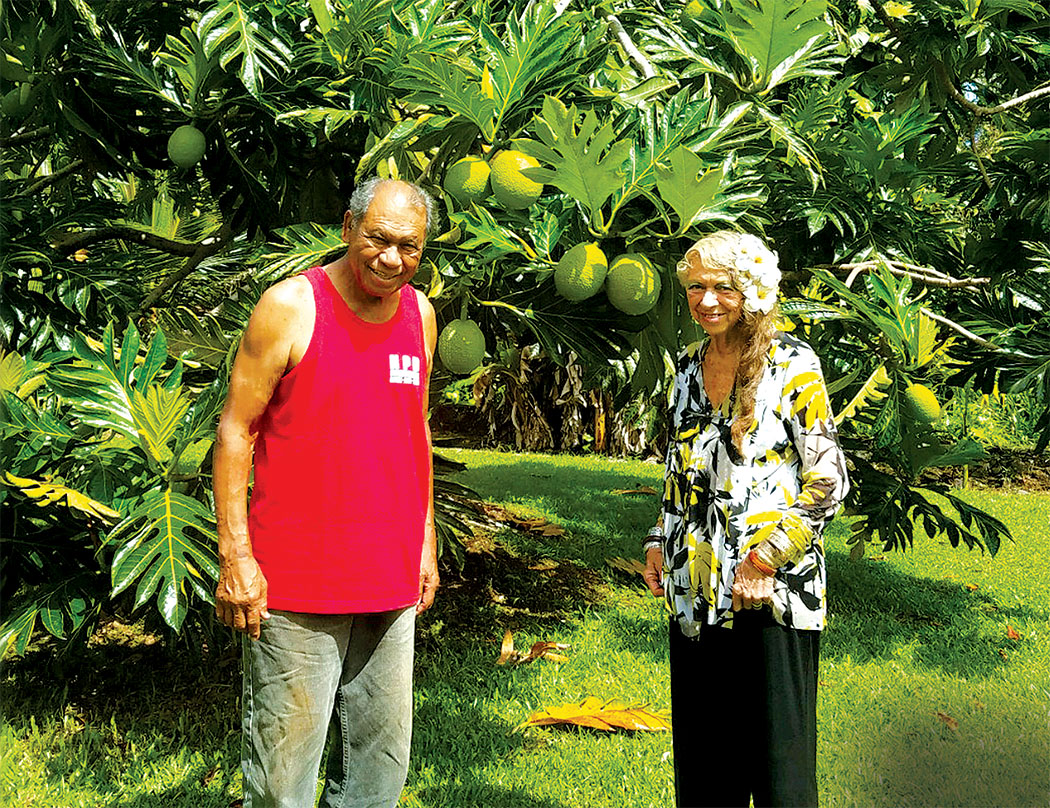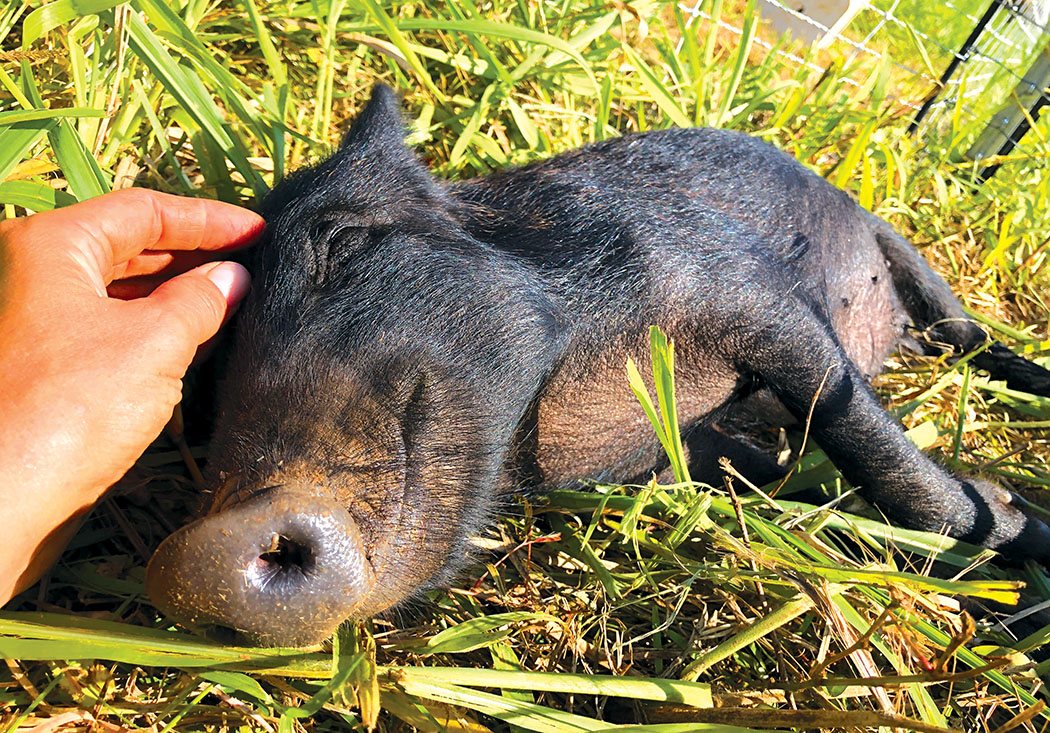
Mālama Mokupuni–Caring for Our Island Environment: Telling the Story of the Archipelago

By Rachel Laderman
When the 6.9 earthquake rocked Hawai‘i Volcanoes National Park on May 4, 2018, it seriously damaged park buildings and infrastructure. The park had to close until the volcanic action settled down, reopening on September 22. During those nearly five months, the interpretive staff needed a place to keep doing their job, explaining what was happening, and answering visitors’ questions—how can I see the lava? Where can we go?
In searching for sites to reach the public, the park rangers set up information tables at busy tourist points around Hilo, such as the airport and Pacific Tsunami Museum. Their chief venue was Mokupāpapa Discovery Center (MDC). Located along downtown Hilo’s bayfront, MDC allows people to virtually explore the northwest Hawaiian Islands, a 1350-mile string of islets and atolls that is part of Hawai‘i, protected as the Papahānaumokuākea Marine National Monument (PMNM).
“Think about it—Mokupāpapa Discovery Center is a remote facility interpreting resources that people can’t go to visit,” says Ranger Dean Gallagher, with the Hawai‘i Volcanoes National Park Service Interpretive Division for 11 years. “This is exactly the role the Park found itself in.” MDC has many attractions, including a 3,500-gallon saltwater aquarium and numerous displays, with themes from monk seals to wayfinding.
A Natural Match
Starting in May, Hawai‘i Volcanoes National Park (HVNP) rangers set up temporary offices and displays at MDC. They gave daily presentations on current volcanic action using “Liquid Galaxy”—a large Google Earth screen that allows you to “fly” over the ocean and alight on any point to have an immersive experience.
“The cooperation and welcome we received by the staff at Mokupāpapa Discovery Center was incredible,” says Ranger Dean.
“With the rangers here, we offered a comprehensive site for learning of the origins of the island chain, from erupting over the hot spot to sinking below the ocean over a thousand miles away,” says Andy Collins, manager of MDC. Andy has been with MDC since 2001, when the upper end of the island chain was first established as a Northwestern Hawaiian Islands Coral Reef Ecosystem Reserve. This unique designation still exists as a political layer underneath the broader protections of the PMNM, which is jointly run by NOAA, the US Fish and Wildlife Service, the Office of Hawaiian Affairs, and the State of Hawai‘i.
Linking Two UNESCO World Heritage Sites

“We have been able to show our connection to each other and teach about Hawaii’s two UNESCO World Heritage Sites,” says Virginia Branco, who has worked for MDC for nearly 15 years, in several roles. “One describes the birth of the islands, the other, the elder islands that originated here.” HVNP was recognized as a UNESCO World Heritage Site in 1987, and the PMNM was designated in 2010.
The northwestern islands have deep cosmological and traditional significance for native Hawaiian culture. “The Tropic of Cancer intersects the island chain at Mokumanamana, which has many heaiu and spiritual sites. This divide marks Au, the realm of humans, light, and life, from Po, a place of primordial darkness, where the spirits return after death,” says Andy.
“Universal concepts such as birth, death, struggle, and survival are key to the UNESCO World Heritage designation,” explains Ranger Dean. “Whoever you are, whatever culture you are from, those concepts resonate. They are found in abundance at Volcano and the northwest Hawaiian islands.”
Both Hawai‘i Volcanoes National Park and PMNM are incredible treasures of rare flora and fauna, and as such need protection. Even several layers of government protection, however, don’t stop human impacts such as marine debris from reaching the remotest northwest islands as well as the shorelines of the park.
New Collaboration
Although we may think of Hawai‘i Volcanoes National Park as soaring above the ocean, the park includes extensive shoreline. While working together during the park closure, the two interpretive teams realized that marine debris was another issue they shared. They created a joint presentation to raise young people’s awareness of this critical problem, and inspire them to seek solutions.
Even though HVNP reopened in September 2018, the educators of both agencies were inspired by their time together. They hope to continue to offer joint presentations, when practical. The alliance strengthened during the tumultuous time of the Fissure 8 eruption will continue to enrich Hawai‘i Island residents and visitors. ❖
Mokupāpapa Discovery Center offers free admission and is open Tuesday through Saturday, 9am until 4pm. It is located at 76 Kamehameha Avenue, corner of Waianuenue, in downtown Hilo.
Rachel Laderman, Lynker Technologies Marine Science Division/NOAA Affiliate, Hawai‘i Island
For more information: papahanaumokuakea.gov, nps.gov/havo/index.htm, whc.unesco.org/


